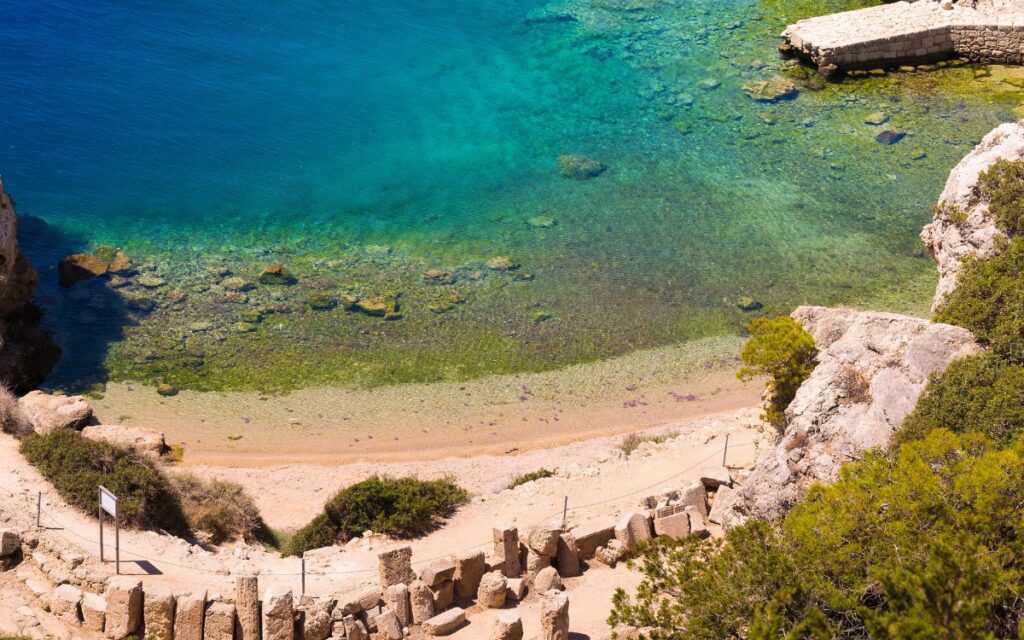Loutraki History
Learn about the history of the Lavrio area
Loutraki: A Timeless Journey Through History
Loutraki and its surroundings stand as a testament to the enduring legacy of classical Greek culture and history. This captivating region invites exploration and inspires awe, offering ancient treasures that still teach profound lessons to those with open eyes and hearts.

Ancient Worship and Mythology
Loutraki’s connection to Greek mythology runs deep. Apollon, the God of the sun and well-being, and Hera, the revered mother of all Gods, were worshipped here in temples whose ruins still echo their divine significance. Historical references to Loutraki’s healing waters date back to Xenophon’s “Hellenica” (431–351 B.C.), where he described the area, then called Thermes, as a campsite for Spartan King Agisilaos during the Corinthian War (395–387 B.C.). Archaeological evidence confirms this ancient connection, with the region known as Peraea being settled by Corinthians as early as 750 B.C.
Roman Influence and Healing Waters
By 146 B.C., under Roman domination, Loutraki’s famed spa waters gained wider recognition. General Sulla is said to have been cured here, spreading the knowledge of these therapeutic springs across the Roman world. These waters continue to attract visitors seeking their reputed healing properties.
Byzantine and Revolutionary Significance
Loutraki’s historical significance extends into the Byzantine era, as evidenced by numerous churches built during this period. The city also played a pivotal role in the Greek War of Independence in 1821, with its strategic location hosting key battles. One of the most notable victories occurred in September 1822, when Greek forces defeated Dramalis’ army, a decisive event that contributed to Greece’s eventual liberation.
Perachora and Heraion: A Link to Antiquity
Just 12 kilometers from Loutraki lies the historic village of Perachora, renowned for its wine production and archaeological heritage. In antiquity, the region was called Peraea, and its rich history is reflected in the ruins of ancient Oenoe (Schinos) and prehistoric tombs. Heraion, the sanctuary of the goddess Hera, is the crown jewel of the area, offering remains of ancient temples, ceramic art, coins, tools, and traces of advanced water systems.
Ancient Krommyon and Mythical Legends
Northwest of Agioi Theodoroi, the ruins of ancient Krommyon were unearthed in 1961. Among the discoveries were statues of Apollo, black-figure vases, and geometric tombs. This region, once called Krommyon after the onion crops it produced—or possibly after Krommo, Poseidon’s son—features in the legend of Theseus, who defeated the fearsome monster Faia here.
Excavations have also revealed a small circular site, speculated to be a place of worship or a theater, adding to the intrigue of this storied land.
Loutraki is more than a destination; it is a bridge to the past, where history, mythology, and natural beauty converge. Come and uncover the timeless treasures of Loutraki—a place where the ancient world still whispers its secrets.
